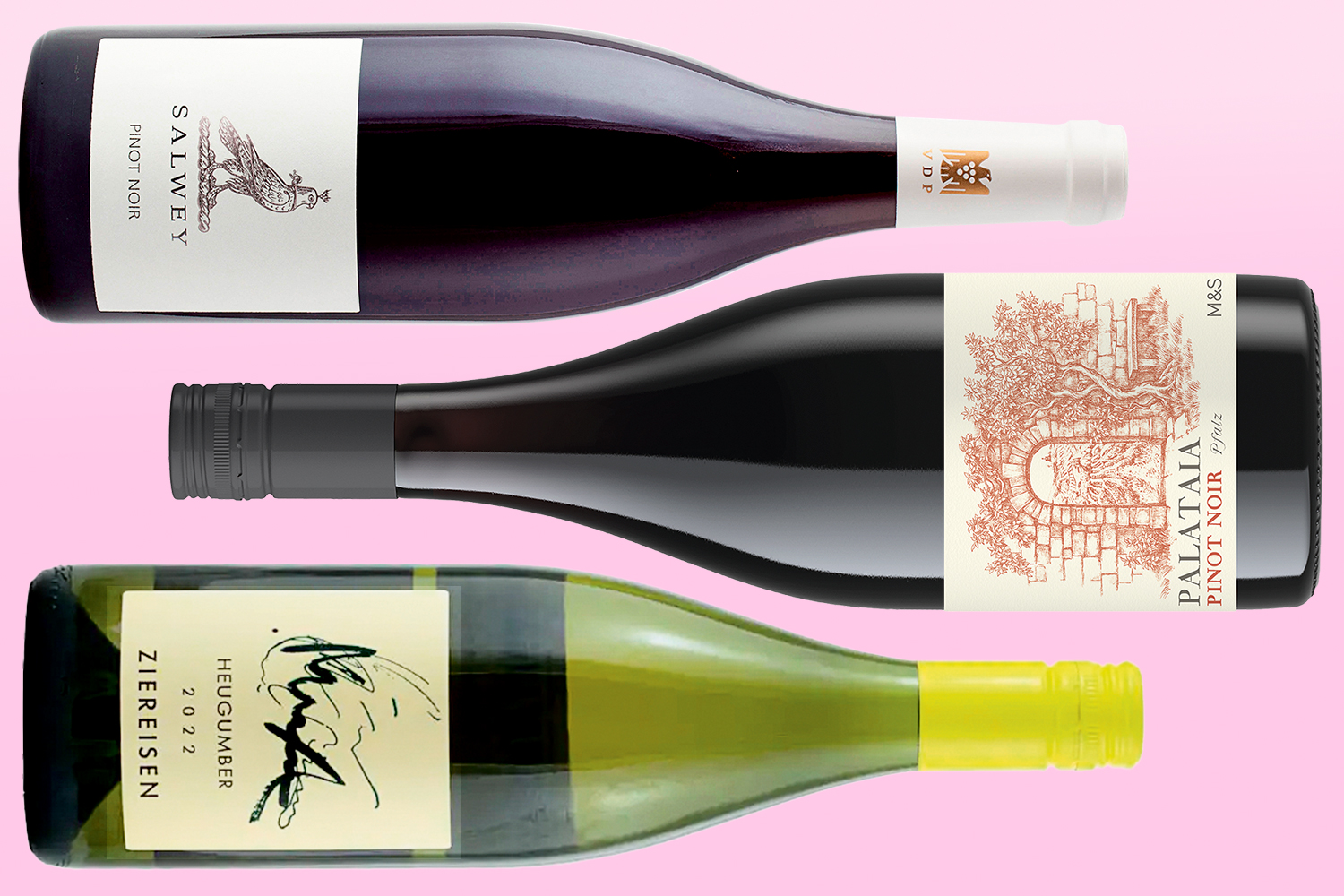Germany’s biggest claims to vinous fame are white wines – the great historic rieslings. The country’s reds have tended to play second fiddle. Even the Germans themselves have long preferred the robust rotwein of Italy, France and Spain to their own often rather simple, thin, tartly acidic efforts. Over the past couple of decades, however, that idea has been shifting, thanks to vast improvements made by producers working with the 21st century’s most fashionable red grape variety: pinot noir. Germany has always had plenty of what the locals call spätburgunde, but if it still comes as a surprise to find out it’s the third-largest pinot country (after France and the US), it’s no longer surprising to find pinot wines as good as M&S’s succulently, crunchy, red-berried Palataia from the Pfalz.
Salwey Spätburgunder, Kaiserstuhl, Baden, Germany 2022 (£22, Tanners)
Earlier this summer, Christoph and Johannes Schneider took me to the top of the vertigo-inducing slopes of their vineyard in the town of Weil am Rhein in Baden. Here, the vast panorama takes in three countries: Switzerland is just 500m to the south, France 1.5km to the west. With Berlin, a 10-hour drive away, feeling somewhat remote, people here tend to take their influences from these neighbours. You can sense that in the brothers’ pinots (available at Swig), which have an impeccable, graceful quality that wouldn’t be out of place in pinot’s spiritual home a couple of hours’ drive west, in Burgundy. The comparison also applies to the unforced beauty of the wines made by Konrad Salwey in his atmospheric Baden cellar a little farther north in Kaiserstuhl.
Weingut Ziereisen Heugumber Gutedel, Baden, Germany 2022 (£14.11, Ripley Wines)
That feeling of cultural fluidity is still more pronounced at the Pfalz’s Weingut Jülg, where the eponymous family make wonderfully expressive, fluent wines (red and white; available through Ripley Wines) that share affinities with those made on the other side of the French border in Alsace, unsurprisingly since 10 hectares of their vineyards are in France. Back in Baden, another producer of soulful, savoury, endlessly complex pinot noir reds, Weingut Ziereisen, is also responsible for the best version I’ve tasted of a white variety usually associated with Switzerland. In the patient, self-trained hands of carpenter-turned-winemaker Hanspeter Ziereisen and his wife, Edel, the generally innocuous gutedel (aka chasselas) is transformed into a wine that reverberates with life and layered yellow plum, apple and pithy flavours.
For information about how The Observer protects your data, read our Privacy Policy.
